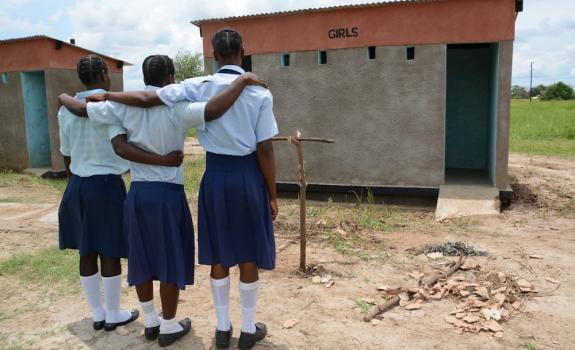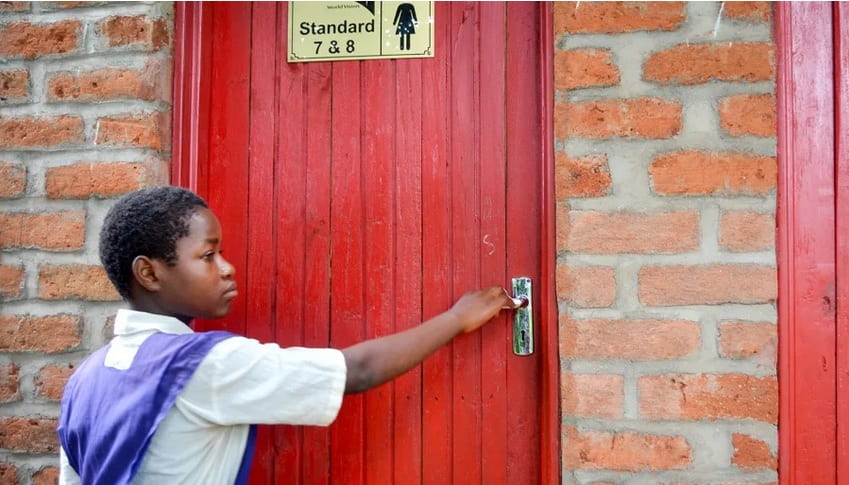
Sanitation often lags behind many other services and commodities across the globe. The State of the World’s Sanitation Report by UNICEF and World Health Organization (WHO) estimates an alarming figure of 4.2 billion people, that’s over half of the world’s population without access to proper sanitation. Poor sanitation contributes to over 830,000 deaths every year. This is huge! Despite the extent of the challenge, the attention towards finding solutions is low. This is even worse for menstrual hygiene, a critical component in sanitation. The biggest hurdle to achieving any positive development outcomes in this subject matter is the tendency to treat sanitation and menstrual hygiene as a private good not suitable for public support. It is even worsened by poverty, informality, and weakened governance.
Lack of sanitation disproportionately affects women. Slightly more than 25% of the total population would be of menstruating age, and the majority of them menstruate every month. In Sub-Saharan Africa; progress is being made by governments, international organizations, and civil society partnerships with the private sector to provide safe, clean, and affordable sanitary wear for women. Examples of such gestures include advocacy to break down taboos associated with it and strengthen response, as well as mass campaigns towards the use of reusable sanitary pads which are safe for the environment and cost-effective. However, this approach has not been sufficient in addressing the sanitation part which includes access to clean water washing and places to dispose of it. In many urban and rural areas, proper menstrual hygiene modalities are non-existent. The United Nations Population Fund (UNFPA) states that there are very few or no national policies that are directed towards Menstrual Health Management in Africa. This is even worse at the subnational level where infrastructural planning and operational functions are carried out.
The result is a scenario where women’s health and dignity are bruised. It affects especially young girls who have to skip school because they cannot access disposal facilities and ultimately, this has a negative bearing on their performance.
In recent years, disposable sanitary pads have gained popularity among women. The use of sanitary pads in Ethiopia, Uganda, and Kenya is estimated to be 45%, 65%, and 87% respectively. However, women do not have a place to dispose of their sanitary waste, be it in public facilities or in their homes. Most resort to dustbins or burning them in environmentally unsafe places. In some resource-constrained areas in Malawi, women resort to keeping their waste under their beds and in deserted open areas. Some also bury the waste, affecting the drainage of the area through seepage. In a single-unit domestic setup, women simply dispose of their sanitary waste in the same bins used for all other kinds of waste. Considering the inconsistent collection of garbage, this is definitely not the best option. In Zimbabwe, affluent households and institutions hire private sanitary disposal companies to routinely collect the waste and dispose of it. It is not shocking that these services are too expensive for ordinary households.
It is evident that women have been forgotten, left to fend for themselves through makeshift strategies to maintain their dignity. City and rural planning has not been inclusive and sensitive to the needs of women. The role of local authorities should be seen through the development of calculated waste management strategies across the board. I have seen efforts by city councils to address plastic, paper, glass waste, and so forth, but not menstrual waste. Over the course of my 6 years in planning school, planning tools on addressing this challenge have rarely, if at all been discussed publicly. In many cases, it is seen as an issue in public health, sexual and reproductive health discourse. Yet the relevance planning is very clear. This indicates how the unrecognition of women in city planning stems further than just policy. A study done by UNWomen in West Africa showed that a large proportion of men and boys were not concerned about menstrual hygiene. This lack of concern could be a result of poor sanitation facilities for women since most decision-makers and professionals in urban planning are men.
To address this disparity, policies at both the national and local levels must center menstrual health management in their sanitation and infrastructural plans. This can be done through clear stands for waste disposal such as the provision of sanitary waste bins in all public facilities such as toilets. In addition, every school and public institution must provide safe, private, and clean water and sanitation facilities for changing menstrual pads (both disposable and reusable), washing, or disposal. These policies should be created with the understanding of the overall responsibility that governments have in providing these services.
 Image: Clean spaces for girls in schools (Source: Worldvision.org.nz)
Image: Clean spaces for girls in schools (Source: Worldvision.org.nz)
Other options such as localized incineration could be deliberated. This already happens in many places but on a much larger scale. Smaller-scale community incinerators would mean that women would discreetly and safely dispose of their waste in a safe place. However, in this case, environmental considerations and taboos surrounding menstruation must be addressed to prevent women from feeling shame from using public disposal facilities. Inclusive cities are the way to go, and this means taking into consideration the needs of women.
Local women’s groups must mobilize to hold their leaders accountable. Sanitation is a basic human right and not a private matter, hence it should be provided. More so, increased participation of women in politics and decision-making roles could provide positive outcomes for menstrual hygiene facilities as they are more directly affected by the ordeal. Young girls must take up space and be involved in student representation bodies and stand for their sanitation rights in schools. And finally, planning schools must develop pro-women curricula, so as to explore the intersection of gender and planning. This will better equip professionals as they deal with such issues.
Cover Image Source: World Toilet Day 2017 for GlobalWaters.org